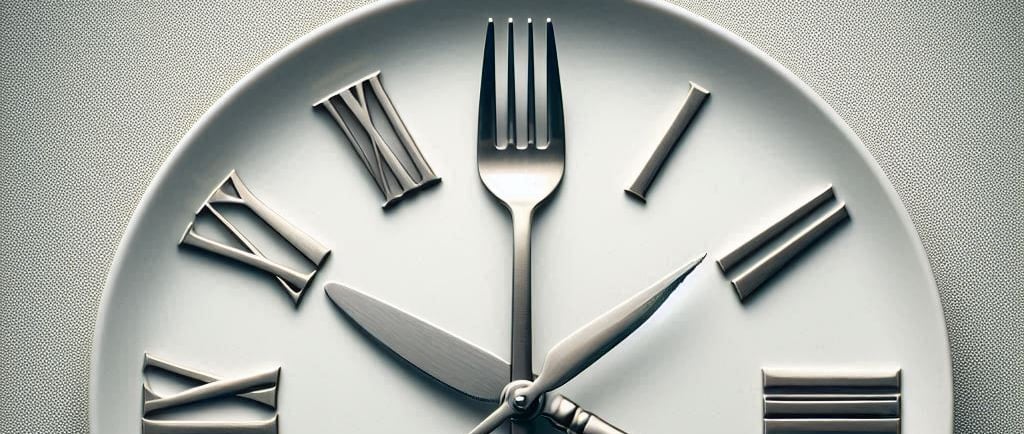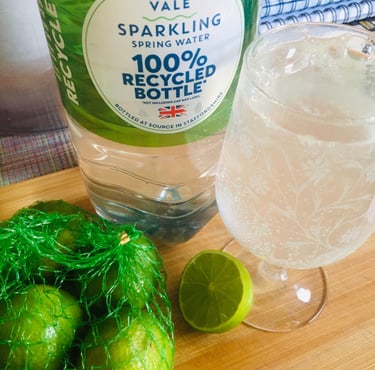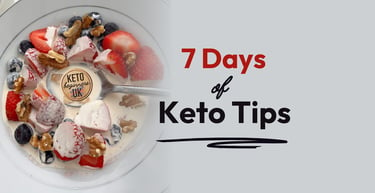How To Make Fasting Easier - 6 Tips
A game plan to alleviate the hunger struggle of intermittent fasting for beginners.
Lisa Beaumont, Ketogentility.co.uk
7/21/20247 min read


(This article may contain links to suggested products, some available in my shop, and some on Amazon. As an Amazon Associate I earn from qualifying purchases.)
When I first began daily intermittent fasting about a year and a half ago, I can remember the struggle of refraining from eating until mid-afternoon, a time when usually I'd have scarfed down two full meals (loaded with carbs) and a couple of snacks (also carbs). In retrospect, it would have helped enormously to know everything I know now up-front, hence I'm sharing it with you so you have a winning game plan to get you over the hump and not spend the first half of every day anxiously waiting to eat.
1. Get Into Ketosis, Fat-Burning Mode
I'm going to tell you right off the bat that unless you're following some form of a keto diet and are in ketosis - i.e. your carbs are so low that your body has switched over to burning fat - you're wasting your time trying to fast.
Carbs make fasting incredibly difficult and unsustainable. This is because your body can either be in carb-burning mode, or fat-burning mode. It can't do both. If you're eating carbohydrates, your body will burn the carbs for energy then crave more carbs, and it'll just store the fat you're eating.
If you eat a cheese sandwich, for example, your body will burn the carbs (mainly from the bread) as fuel, store the fat (from the cheese and butter) somewhere on your body, and then relentlessly pester you for more carbs by way of hunger pangs.
However, if your body has become fat adapted, i.e. moved over into ketosis, and you eat a 100% beef burger (no bread) topped with cheese, it'll burn the fat in the burger and cheese as fuel and then it'll tell you clearly it's full by removing your desire to eat anything else.
So get into ketosis before starting intermittent fasting. Once your body has adjusted to burning ketones (fat) for fuel, i.e. you're in ketosis, then you can begin fasting, and it's a whole world easier.
Heard of the keto diet but not yet implemented it? Or need some recipe inspiration? I've got you! Throughout my keto journey, as a keen amateur cook, I've documented my best and simplest healthy keto-friendly recipes, and catalogued them in a book with colour photos.
You can get pick up a dozen FREE recipe cards from the files section here in my Facebook group , to include 3 snacks and starters, 3 of my most brilliant salads, 3 delicious hot meals, and even 3 easy desserts so you don't feel deprived while staying in ketosis! These recipes cards are yours for free to get you started.
Or if you'd prefer to just get the whole book (44 complete recipes in total) you can download the ebook here, or order it in full colour paperback here to keep in the kitchen. And note: there's no "hair of unicorn" in my recipes. You can get every ingredient from pretty much any supermarket. Get your copy of Ketogentility: Food, refined here.
Once you're in ketosis, that's when you can begin your fasting journey with considerably less struggle! Let's move on to point 2...
2. Increase Animal Protein and Animal Fat
This was the game-changer for me. When I began keto and fasting, I was pescetarian (like a vegetarian but who also eats fish and seafood, so not quite a vegetarian but you know what I mean) and, frankly, it wasn't enough protein to amply keep my hunger pangs completely away. I still felt a bit peckish more of the time than I cared to admit, which made not snacking harder than it needed to be. Although I managed to stay in ketosis, I still found myself having a few brazil nuts or a miso soup here and there as I didn't feel satisfied for long enough.
As soon as I reintroduced red meat into my diet - and believe me, that took some getting over myself as I hadn't eaten meat in 35 years! - everything changed. My food cravings went away and I was just full, and I mean feel-like-I-just-ate-a-Christmas-dinner-and-couldn't-touch-another-thing type of full. And this even spilled over into my mornings meaning I didn't wake up with breakfast on my mind, which was a first in my entire planetary existence.
Eggs, cheese, fatty fish, seafood, chicken, and full fat Greek yogurt are also good choices to increase your protein and fat intake, but air-fried grass-fed ribeye or fillet steaks or 20% fat grass-fed mince cooked in salted butter are what made the significant difference for me. I'm actually now following closer to a carnivore diet at the time of writing this...
I realise that, for some, steak several times a week might seem a bit extravagant, but when you offset that against all the other foods you're not eating because you're skipping breakfast or dinner and no longer eating snacks, it actually works out about the same. Notwithstanding inflation, my grocery bill, as a single woman, has stayed pretty stable at around £50 a week.
3. Only Buy What You Need for Scheduled Meals
They say don't shop hungry and I wholeheartedly agree! Keep in mind the number of days you're shopping for and buy the exact food you'll need, right down to calculating the number of eggs you're going to eat in that time period. Planning your meals ahead of time can help you stay on track and prevent you from straying from your fasting goals.
Based on your meal plan, make a shopping list ideally in the order you'll come across them in your supermarket, and stick rigidly to it. The only time to safely go off-list is when you see a good deal on items that can be substituted, e.g. you were going to buy mince, but they're selling off 100% grass-fed beef burgers, or you were getting salmon but they've got a deal on smoked mackerel. Buy for specific meals to avoid unnecessary temptation.
4. Increase the Quality of Your Food
Quality over quantity is a great mantra to follow, especially when fasting. I say buy the very best you can realistically afford, such as organic berries and vegetables, grass-fed meat, the highest quality eggs, etc. Not only do they taste better and contain fewer chemicals and other nasties, but they also offer more more bang for your buck in terms of nutrients and will therefore keep you feeling satisfied for longer.
5. Enhance Your Beverage Experience
Don't underestimate the power of a really good beverage. If you're used to accompanying your cuppa with a little snackette you can feel bereft when that's no longer an option to you. It feels like something is... lacking.
To negate that feeling, you need to improve the quality of your beverages so much so that your morning coffee or afternoon tea becomes the main event, rather than an accompaniment to a snack. You're elevating your life, right? So ditch the cheap supermarket teas and coffees, and invest in your experience of premium quality teas and coffees - it's so worth it.
Personally I love a good cup of coffee and a little while ago a friend of mine, who's a coffee aficionado, recommended I try Ethiopian Yirgacheffe. I read an online description of the stuff and was certain I'd hate it, but decided to try it anyway.
WOW! I was an instant convert - where had this stuff been hiding all my life?! Anyway, long story short, I liked it so much I now have my own coffee brand! I know, hilarious, right? And I strongly urge you to try it if you like coffee - it's a game changer. I now view other coffees with disdain. You can check it out here if you want to know what I'm making such a fuss about.
If you're moving up the ranks with your beverages, don't do it - or yourself - the dishonour of serving it in that old mug you got free with an Easter egg. You're better than that. The drink is better than that, for goodness' sake. Whether you're into crockery or not is entirely irrelevant. You want to feel like a monarch when you drink your coffee and tea, so upgrade your drinking vessel in alignment. I also have a stunning colourful tiled coaster I bought in Sicily and I sell some similar ones in my shop. These details make all the difference.
You've quit alcohol, fizzy pop and fruit juice but you don't have to go cold turkey on cold drinks. Replace them with a good quality still or sparkling mineral water with a squeeze of fresh lemon, lime, or cucumber. Again, to make it even more enjoyable, consider your glassware. If a chunky glass tankard or a gold-rimmed cocktail glass with fancy ice cubes and straws help you to feel like your water is a fun party, don't hold back.
These changes to your drinks elevate your fasting experience to make it feel like a treat rather than a chore.
6. Take On Another Engaging Project
One of the best ways to distract yourself from obsessing over food - or anything, really - is to dive into an engaging project. Whether it's a new hobby, a language, a DIY home improvement task, or a creative pursuit, keeping yourself occupied with something fun and challenging can make getting into fasting a lot easier until it becomes your new routine.
To Summarise
In summary, your game plan to make fasting easier is to get into ketosis first so that your body doesn't crave carbs, prioritise animal protein and fats so that you're fuller for longer, plan your meals and buy only what you need, increase the quality of your food and upgrade your beverages, and distract yourself from food with an engaging project.
This set of strategies makes fasting a whole world easier than flailing around, wishing the hunger - and your time - away. You'll be able to spend a more pleasant time in autophagy and, before long, a half-day fast will become second nature.
Did you like this post? Please do share it with others!
Where would you like to go now?


Lisa@ketogentility.co.uk
© 2025. All rights reserved.


